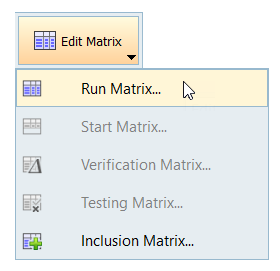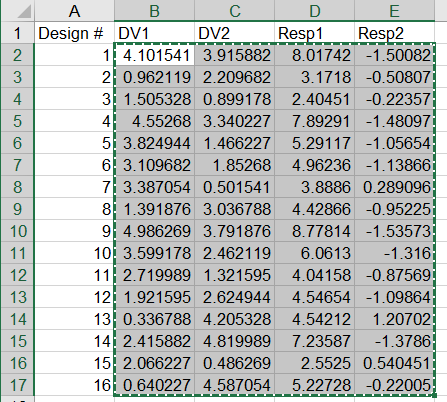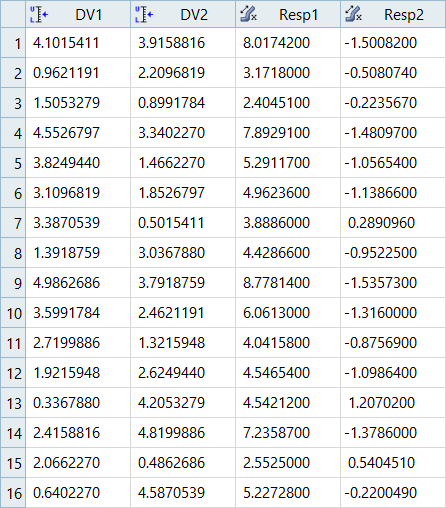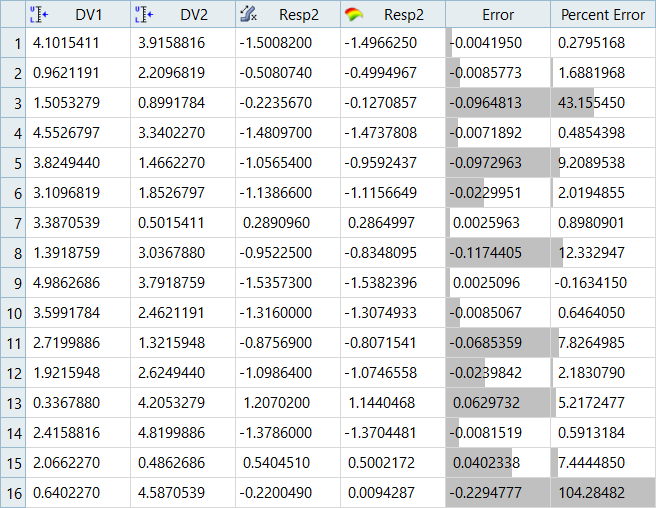HS-2200: Use Existing Design Data from an Excel Spreadsheet
In this tutorial, you will learn how to build a predictive model (Fit) for an application where only design data in a Microsoft Excel spreadsheet is available (that is, no simulation model exists).
The objective of this tutorial is to create a Fit (approximation) using the designs in the spreadsheet.
The spreadsheet used here contains five columns. The first column contains the numbering of the designs, the second and third columns contain the values of the two input variables for each design, and the fourth and the fifth columns contain the results of a DOE study previously run. Sixteen designs have been evaluated.
Perform the Study Setup
- Start HyperStudy.
-
Start a new study in the following ways:
- From the menu bar, click .
- On the ribbon, click
 .
.
- In the Add Study dialog, enter a study name, select a location for the study, and click OK.
- Go to the Define Models step.
-
Add an Internal Math model.
- Click Add Model.
- In the Add dialog, add one Internal Math model.
- Go to the Define Input Variables step.
-
Add input variables.
Perform Nominal Run
Create and Evaluate Output Responses
Run DOE
-
Add a DOE.
- In the Explorer, right-click and select Add from the context menu.
- In the Add dialog, select DOE and click OK.
- Go to the step.
- In the work area, set the Mode to None.
- Click Apply.
-
Edit run matrix.






